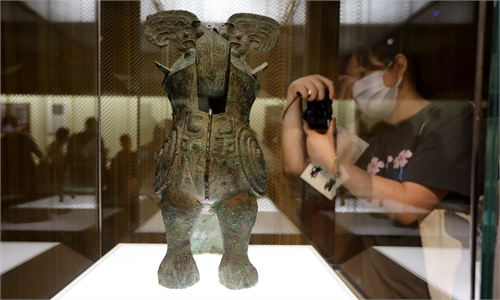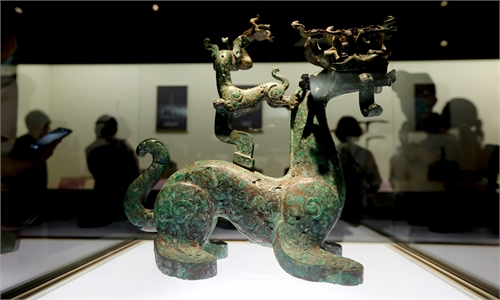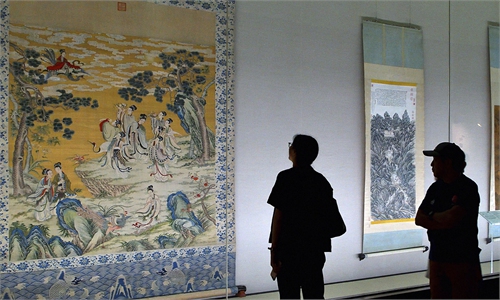ARTS / ART
Chinese artists keep tradition alive with database of decorative patterns
More than ornamental
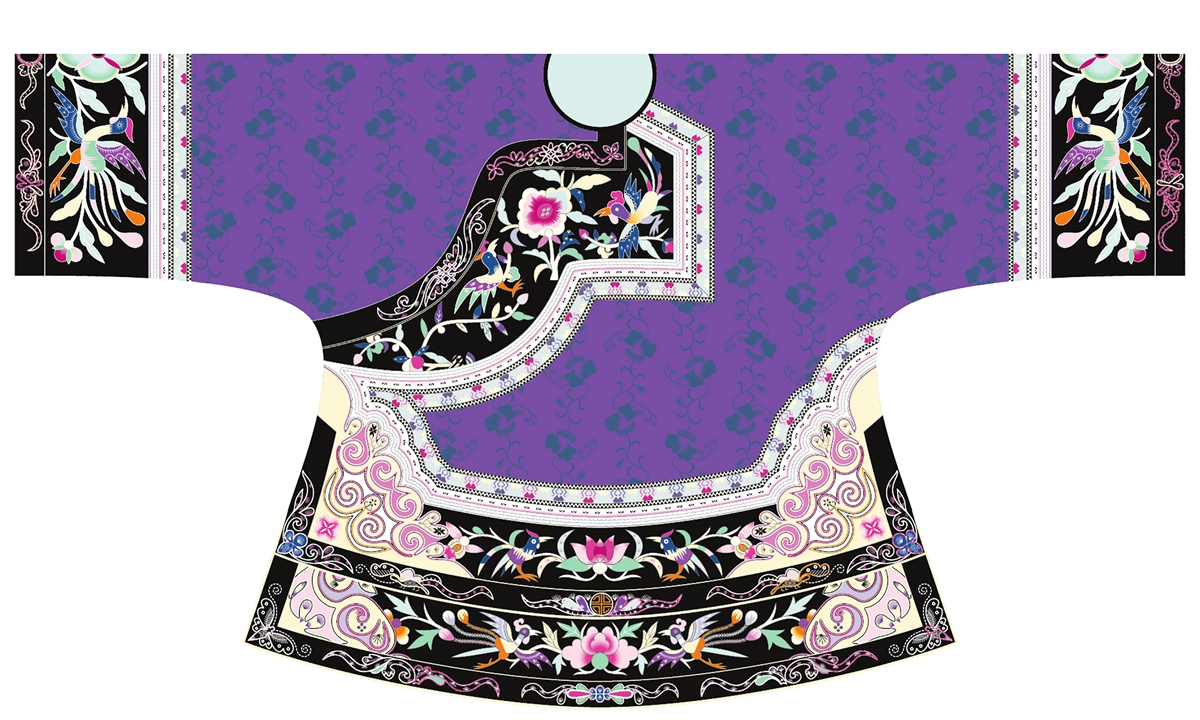
Tujia ethnic clothing with floral and bird pattern Photo: Courtesy of Huang Qingsui
Almost everything in the nature, like clouds, flowers and sea waves, or even things that do not exist in reality such as mythical dragons, phoenixes and qilin (Chinese unicorn) inspired the ancestors of today's Chinese to create diverse decorative patterns on objects ranging from daily life necessities to pure artworks.
Whether on murals at the Mogao Grottoes or on cloisonne porcelain bottles, these decorative patterns often carried auspicious meanings and could be seen almost everywhere in China.
They do not just depict traditional Chinese aesthetics and wordlessly record the essence of people's lives, but also highlight exchanges between China and other regions. They have also attracted foreigners such as British architect Owen Jones, who depicted Chinese ornaments in a 19th century book.
The huge number of these decorations increases the difficulty of conservation efforts. Fortunately, many Chinese artists have been considering various ways to pass down this culture to the next generation.
Huang Qingsui, a Zhuang ethnic art designer, numbers among these artists. He started collecting decorative patterns from rural areas in 2013 and recorded them in an online database that now contains more than 20,000 traditional decorations.
The 30-something Huang has been seen as a savior of patterns from different ethnic groups and dynasties throughout Chinese history.
"The database is like a dictionary of patterns for modern artists," he told the Global Times.
Huang and his team have made definite progress. As the database has grown, more and more designers are being inspired by these traditional patterns to create their own original works.
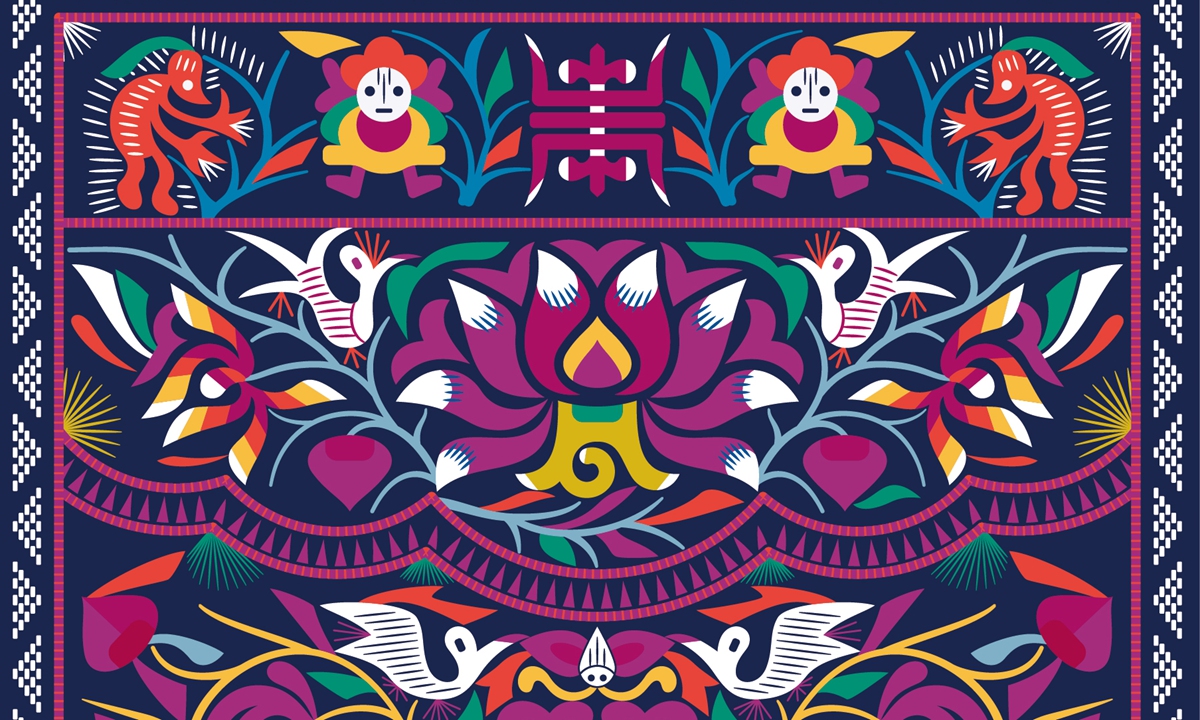
Bai embroidery with lotus pattern Photo: Courtesy of Huang Qingsui
Expanding dictionaryHuang's database is called Wenzang. It covers more than 200 themes, including ethnic minority culture, various dynasties and art forms. More than 20,000 decorative patterns from 90 percent of the country have been cataloged in the database.
Huang noted that the online database has continued to grow.
Managing the database involves three steps. The first involves collecting these traditional patterns through various channels, including investigating and visiting places where these decorations may have been passed down or contacting museums and experts.
"Some patterns were discovered on popular wares such as bronze wares, which are rich research materials," Huang said.
After tracking down a decorative pattern, Huang and his team take photos and digitally reproduce the patterns on computer. During the process, they often need to restore damaged patterns, especially when it comes to decorative patterns on clothing, as they tend to be faded or misshapen.
For example, when collecting the traditional patterns of the Miao ethnic group, they chose to use today's Miao embroidery as a reference to ensure accuracy.
The last step involves archiving the data and checking and correcting any mistakes that may have occurred during the earlier steps.
Traditional patterns reflect the characteristics of various groups and demonstrate the integration of different cultures, according to Huang. For example, lotus decorations originated from Buddhism and then were integrated into traditional Chinese culture.
According to the Miao traditional belief system, everything has a soul, so their decorative patterns usually contain flowers, birds, fish and insects, while the Dai ethnic group has been more influenced by Buddhism and living in the rainforest, so religious imagery commonly contains elements such as elephants and pagodas.
Staying relevant
"When I studied art design at college, I found that the starting point for our understanding of design is the Western Bauhaus style, which is more rational and focused on form," Huang said.
"But traditional Chinese beauty is better at showing sentimental bonds and becomes a kind of carrier for our feelings."
The beauty contained in traditional patterns has inspired Chinese designers to find their own style and sentimental bonds instead of just caring about function and form when designing their works.
These modern works covering life necessities such as clothing, cups and cosmetics as well as art forms like porcelains and statues allow traditional patterns to be more frequently seen in people's daily lives, which increases the chance people will stop and appreciate their beauty and the culture hidden within them.
Based on the Dong ethnic group's decorative pattern known as "pure and turbid air," a group of Chinese designers created jacquard pattern socks that have proved extremely popular on e-commerce platforms in China.
The database also inspired 15 artists and illustrators who created dozens of tags and more than 300 products using a Chinese phoenix pattern.
Keeping up with the current trend toward appreciating traditional culture, online platforms such as Meitu Pic have cooperated with the database to display the beauty of these decorative patterns through videos and pictures online.
"In 2013, when I first threw myself into the work of preserving traditional decorative patterns, those who gave me support and encouragement were mostly middle-aged people over 40. However, now most of our followers are in their 20s. They have great enthusiasm for traditional culture," Huang told the Global Times.
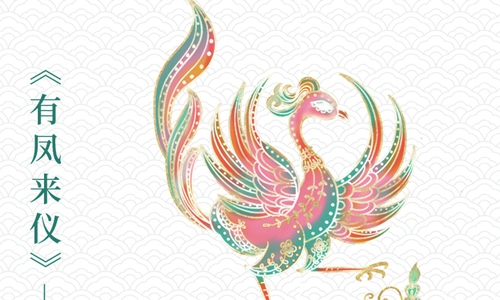
A decorative Chinese phoenix pattern Photo: Courtesy of Meitu Pic

